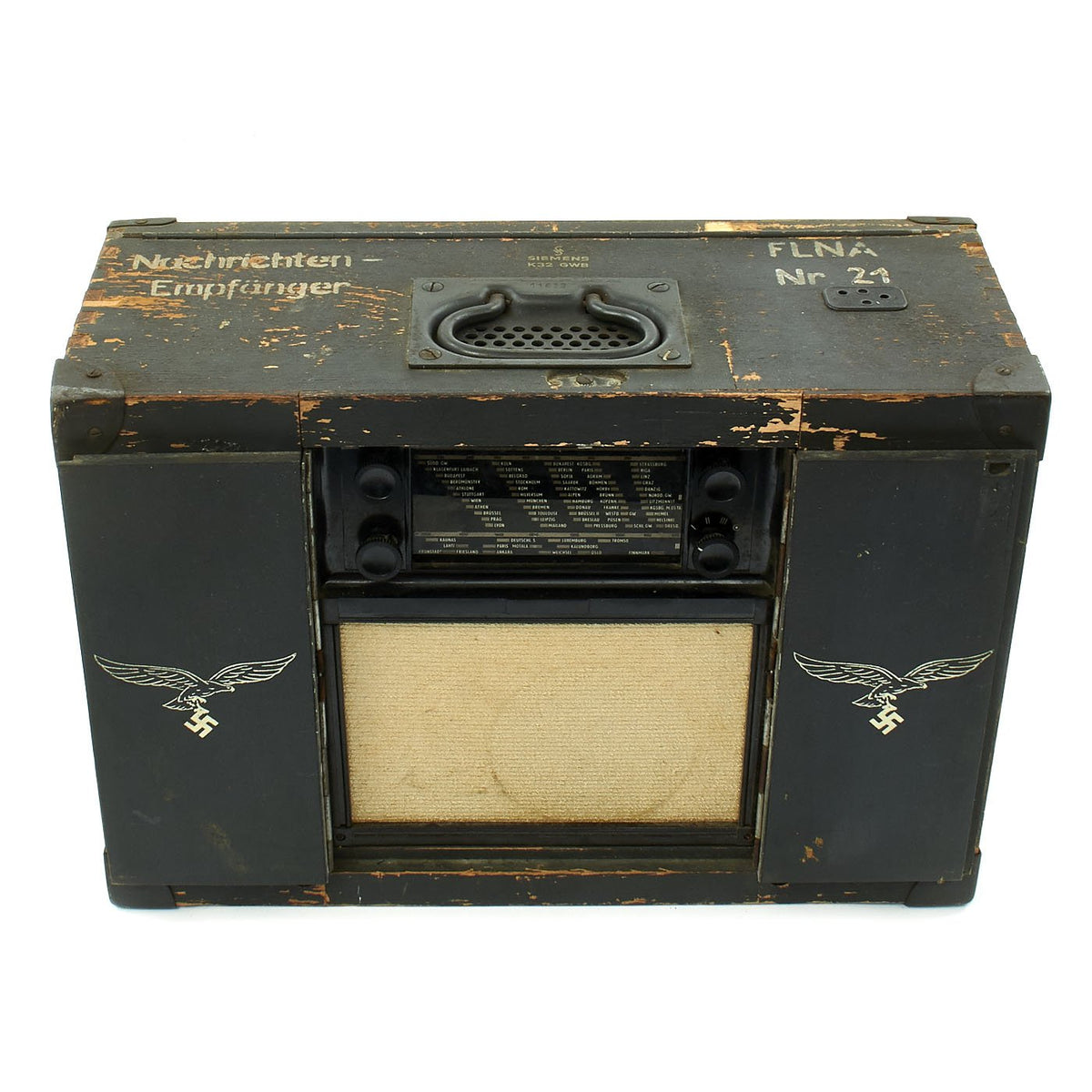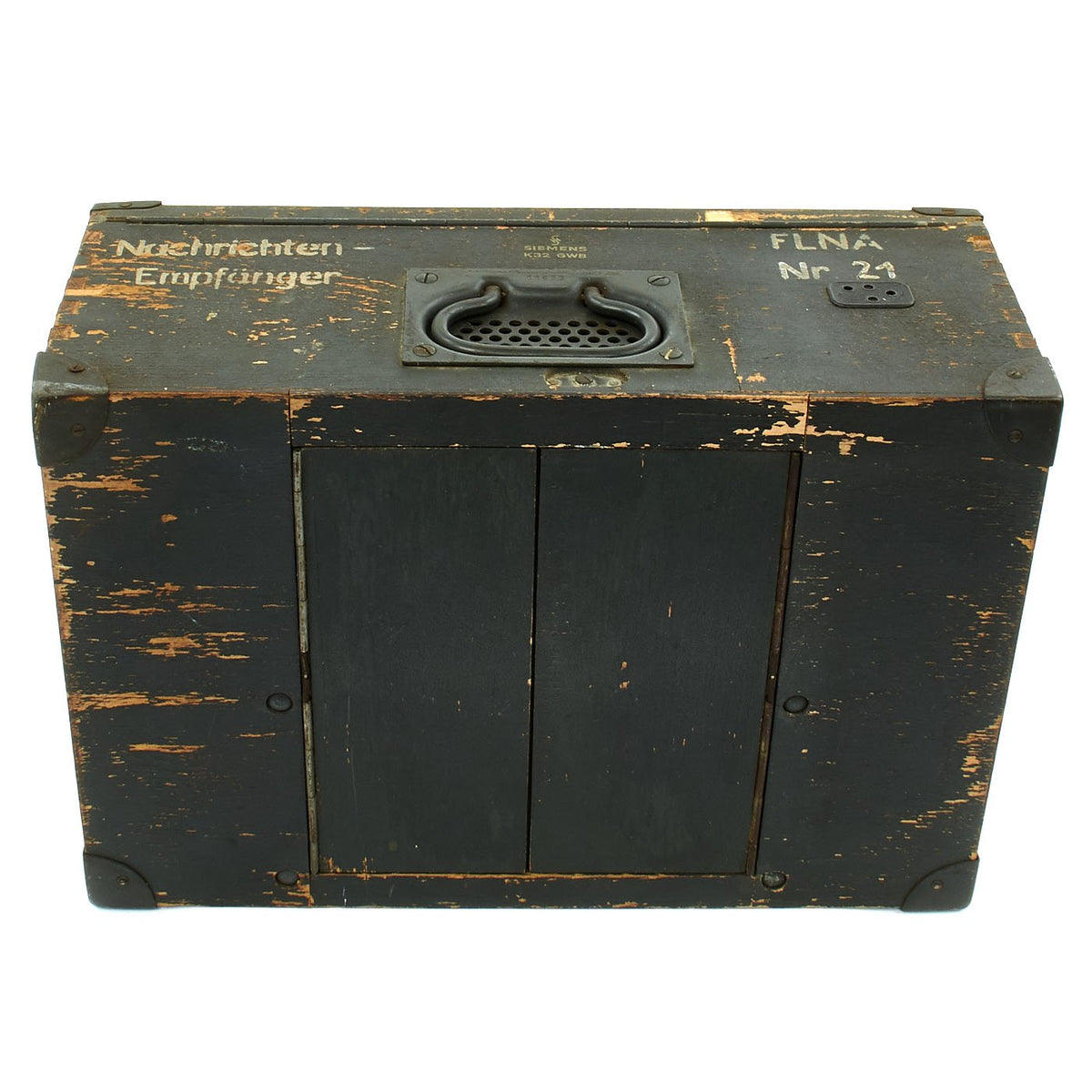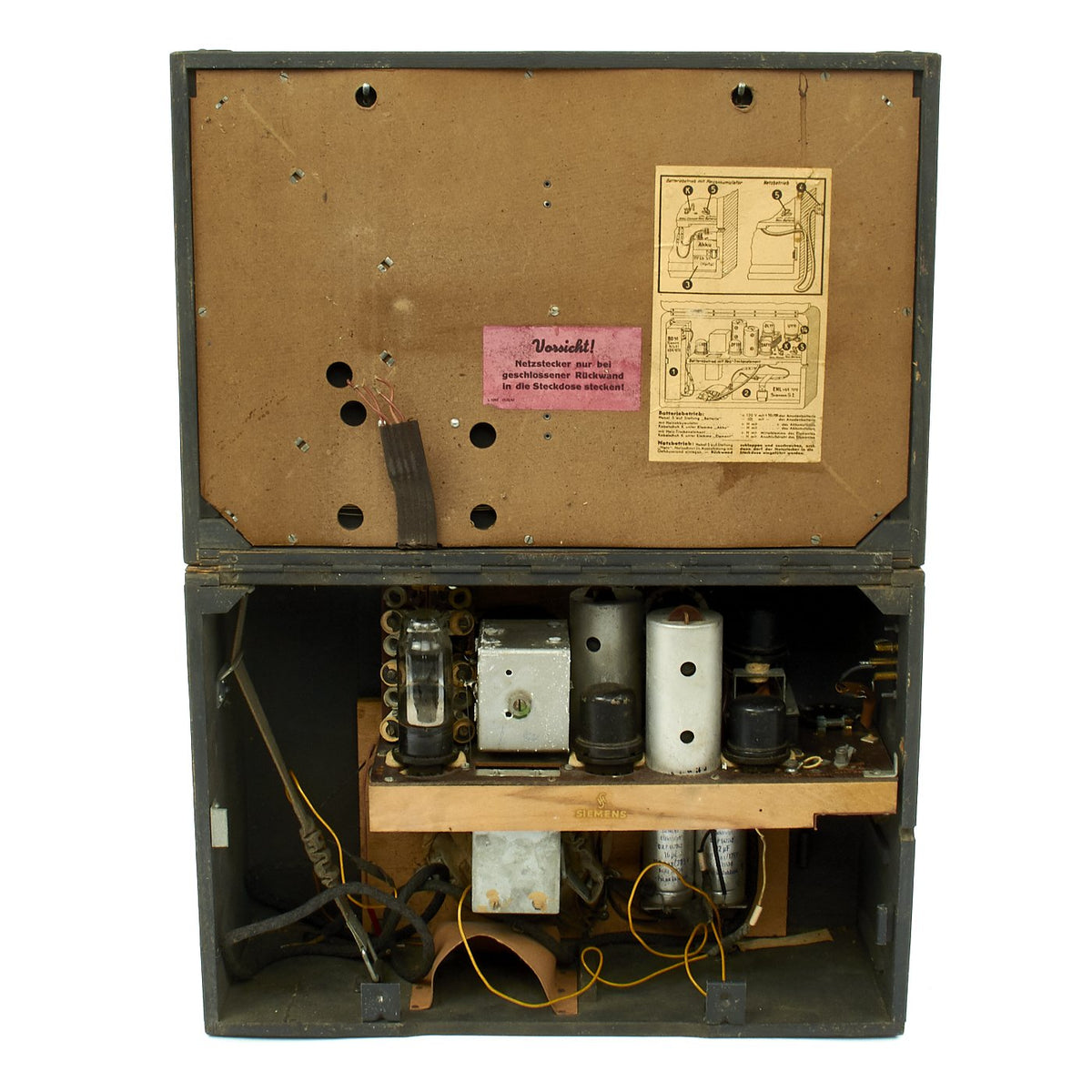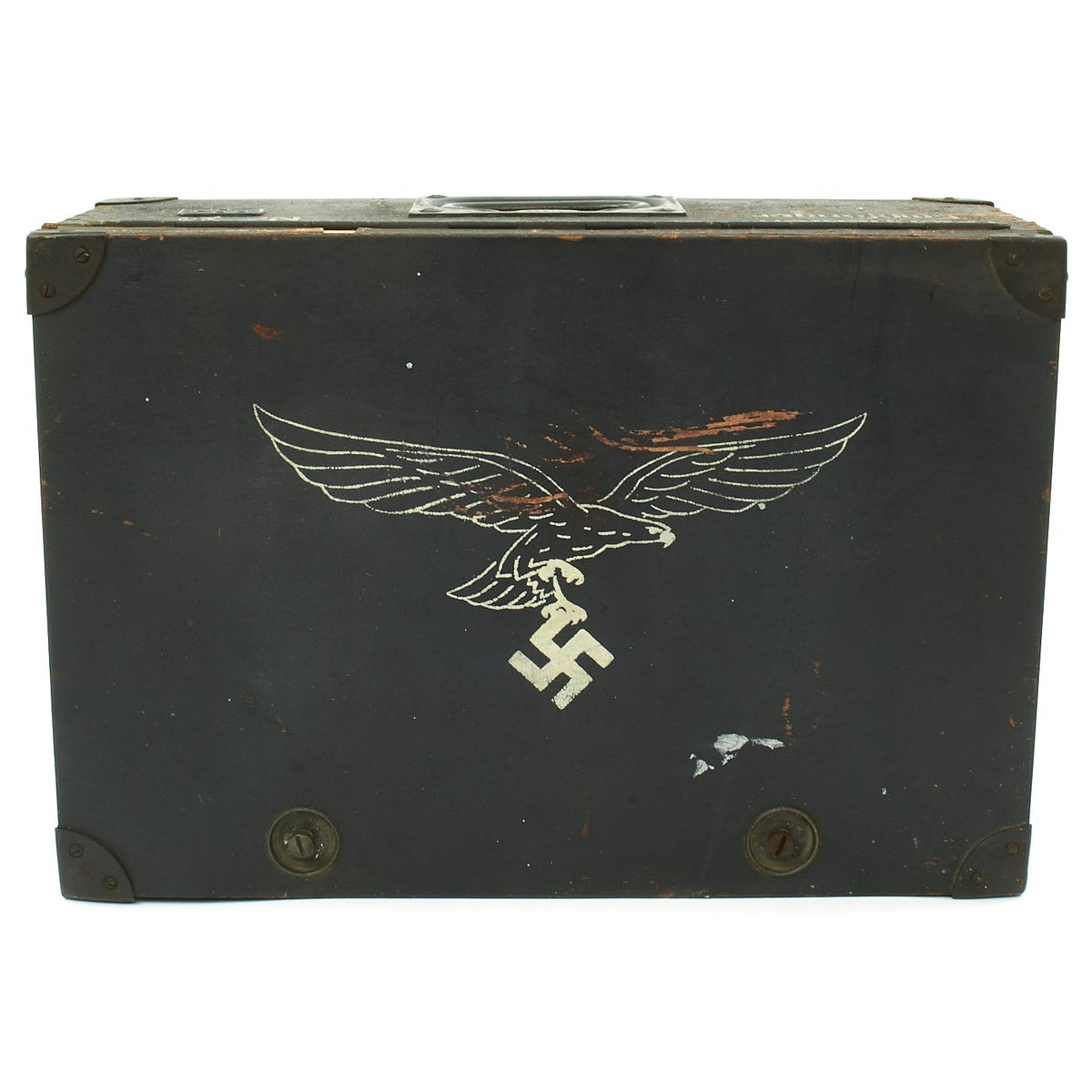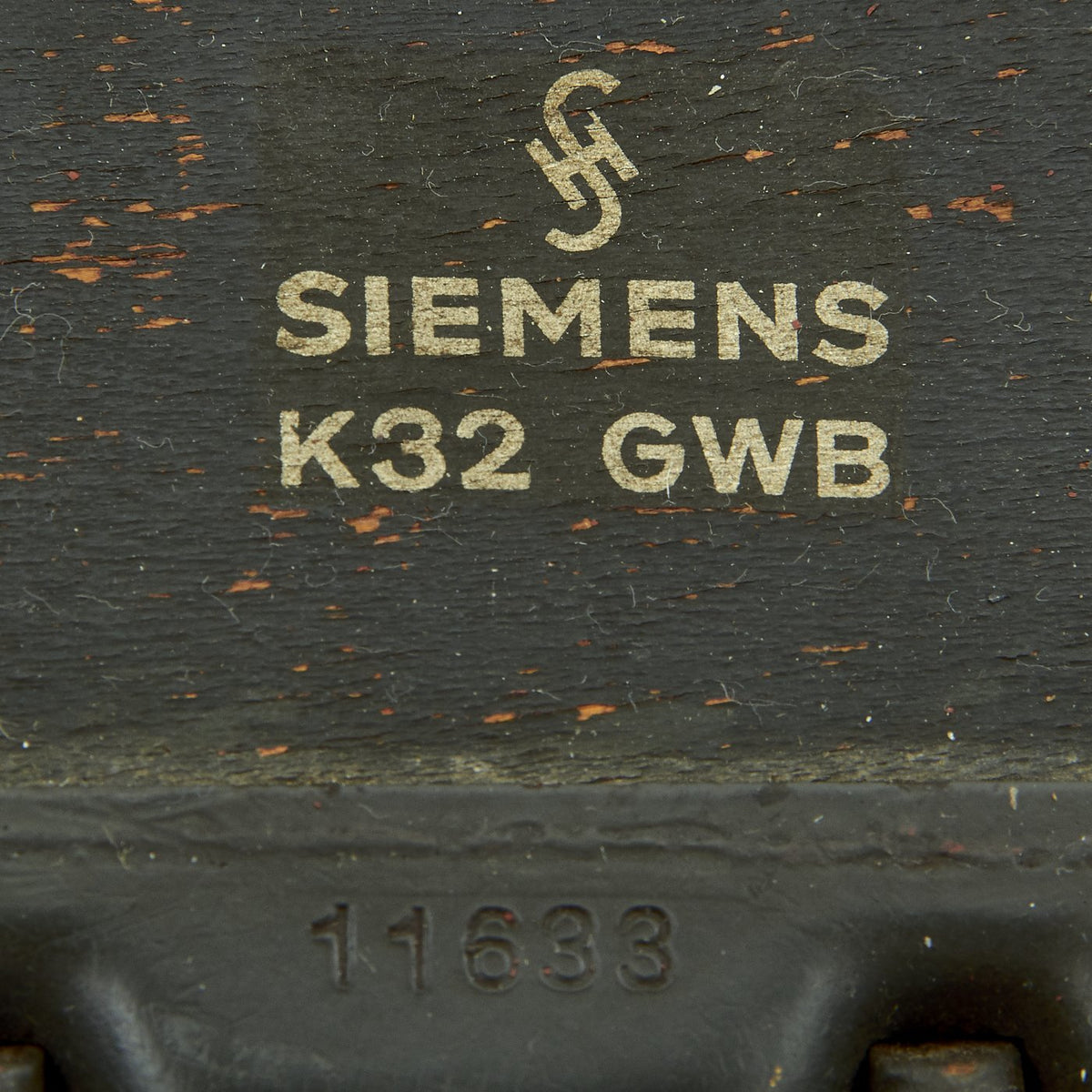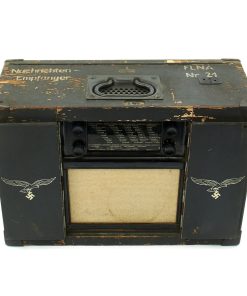Original German WWII Luftwaffe Portable Model K32 GWB Radio by Siemens – Nachrichten-Empfänger Original Items
$ 995,00 $ 248,75
Original Item: Only One Available. The NSDAPs recognized early on that radio would be a very effective propaganda tool as the spoken word was more influential than the written. When AH came to power, Germany’s national radio broadcasting system was quickly taken over by the Ministry for Public Enlightenment and Propaganda. A special department, the Chamber of Radio, was created, and it pushed manufacturers into producing an inexpensive radio that the average person could afford. This way the Ministry could reach more people. The Wehrmacht (Armed Forces) also recognized the influence of the radio, so commercial radios were provided for some units.
This is a nice example of one of these early radios, which are very rare. This is a Siemens model K32 GWB barracks radio, with long and short wave capabilities. It has a paint stencil on the top reading Nachrichten-Empfänger (News receiver), along with FLNA / Nr. 21, though we do not know what the initials signify. These were manufactured for the Luftwaffe circa 1941. It appears to be complete, with internals minus batteries, plus instructions on internal reverse side door. It has a Super-Heterodyne IF-Frequency of 468khz, 6 AM tuned circuits, moving coil dynamic speaker, and ability to be powered by battery or wall outlet.
The radio set measures 12 1/8″ tall x 17 3/4″ wide x 7 1/4″ deep. It still retains the original deep grey/blue Luftwaffe paints over multi-panel hardwood construction, with mortised corner joints, and molded black Bakelite and metal fittings.
The cabinet is in good condition with some damage to the paint and wood due to age and wear. There are a few chips out of the wood. The doors function: press the release button and two spring-loaded doors open, revealing the control panel. The cabinet has 3 white Luftwaffe eagles with swass, which are quite crisp, though the one on the back is somewhat worn. The fabric covering the speaker is perfect (often torn or stained) and the rear panel opens with little effort to examine the interior. Original power cord is still present but there is no plug end installed.
All of the front knobs are present, though we do not know if they function as they should. The two metal/bakelite tubes and one glass vacuum tube are present, and look to be good. The glass tube still has the “getter flash”, indicating a good vacuum. The internal circuit shelf is somewhat loose, which allows the internals to shift somewhat. Also, the leads from the antenna built into the back of the radio have been disconnected from the circuitry, but could be repaired easily.
This is a very good condition highly collectible model for both radio and military collectors.
Fast Shipping with Professional Packaging
Thanks to our longstanding association with UPS FedEx DHL, and other major international carriers, we are able to provide a range of shipping options. Our warehouse staff is expertly trained and will wrap your products according to our exact and precise specifications. Prior to shipping, your goods will be thoroughly examined and securely secured. We ship to thousands clients each day across multiple countries. This shows how we're dedicated to be the largest retailer on the internet. Warehouses and distribution centres can be located throughout Europe as well as the USA.
Note: Orders with more than one item will be assigned a processing date depending on the item.
Before shipping before shipping, we'll conduct a thorough inspection of the items you have ordered. Today, the majority of orders will be delivered within 48 hours. The delivery time will be between 3-7 days.
Returns
The stock is dynamic and we cannot completely manage it because multiple stakeholders are involved, including our factory and warehouse. So the actual stock may alter at any time. It's possible that you may not receive your order once the order has been made.
Our policy is valid for a period of 30 days. If you don't receive the product within 30 days, we are not able to issue a refund or an exchange.
You can only return an item if it is unused and in the same state as the day you received it. You must have the item in its original packaging.
Related products
Uncategorized
Uncategorized
Uncategorized
Uncategorized
Uncategorized
Uncategorized
Uncategorized
Uncategorized
Uncategorized
Armoured Fighting Vehicles of the World: AFVs of World War One (Hardcover Book) New Made Items
Uncategorized
Uncategorized
Band of Brothers ORIGINAL GERMAN WWII Le. F.H. 18 10.5cm ARTILLERY PIECE Original Items
Uncategorized
Uncategorized
Angolan Rebel 1970s era 60mm Inert Display Mortar from Angolan Civil War Original Items
Uncategorized
Uncategorized
Uncategorized
Uncategorized
Uncategorized
Armored Burgonet Helmet & Polearm from Scottish Castle Leith Hall Circa 1700 Original Items
Uncategorized
Uncategorized
Uncategorized
